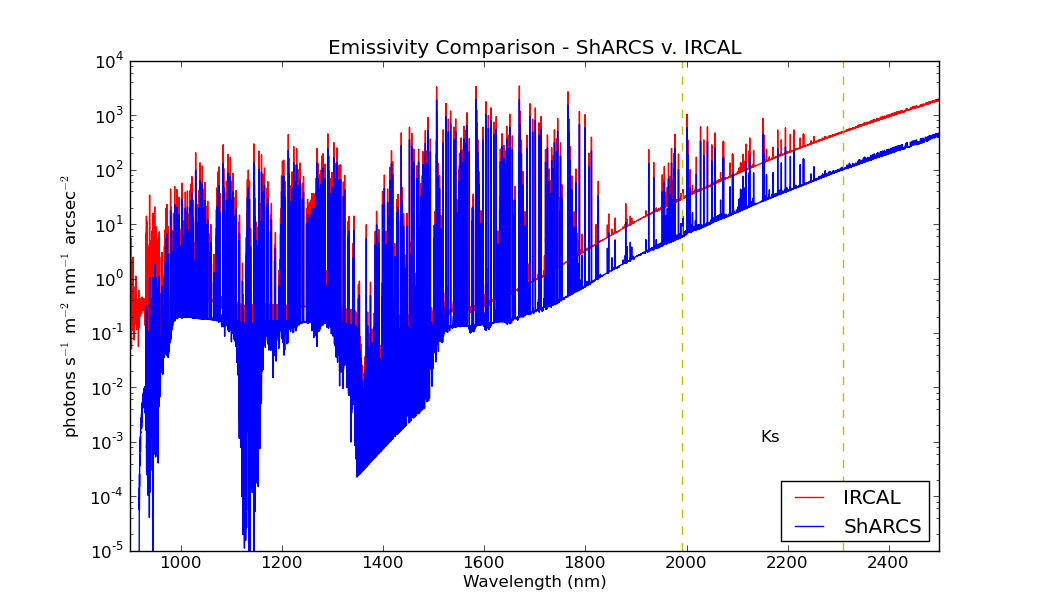With the new system, we retain the IRCAL filter curves, dust fraction of 3% and coating degradation described above. Strehl ratios are derived from [6]. The predicted sky background and throughput for ShaneAO are given in Table 5.
Comparing Tables 5 and 3, the model predicts that the background in the  band will be a magnitude fainter and throughput will increase by 20-30% across all bands. The reduced background for ShaneAO is illustrated by Figure 3.
band will be a magnitude fainter and throughput will increase by 20-30% across all bands. The reduced background for ShaneAO is illustrated by Figure 3.
Figure 3:
Total background and emissivity comparison as determined by our model between the existing system (IRCAL) and the new system (ShARCS).
|
 |
For limiting magnitudes, the comparison between current and new systems is one of what is and will be their usual modes of operation:
- IRCAL:
- LGS mode with 8
 8 subapertures and 300 second Fowler-16 exposures.
8 subapertures and 300 second Fowler-16 exposures.
- ShARCS+old laser:
- LGS mode with 8
 8 subapertures (ShARCS 8 in the figures and tables below) and 300 second Fowler-16 exposures - this will be the modus operandi for a few months after ShARCS is installed (April 2014 onwards) until the new laser is operational.
8 subapertures (ShARCS 8 in the figures and tables below) and 300 second Fowler-16 exposures - this will be the modus operandi for a few months after ShARCS is installed (April 2014 onwards) until the new laser is operational.
- Full ShaneAO:
- LGS mode with 16
 16 subapertures (ShARCS 16 hereafter) and 300 second Fowler-32 exposures.
16 subapertures (ShARCS 16 hereafter) and 300 second Fowler-32 exposures.
Subsections
Srikar Srinath
2013-10-09
![]() band will be a magnitude fainter and throughput will increase by 20-30% across all bands. The reduced background for ShaneAO is illustrated by Figure 3.
band will be a magnitude fainter and throughput will increase by 20-30% across all bands. The reduced background for ShaneAO is illustrated by Figure 3.
